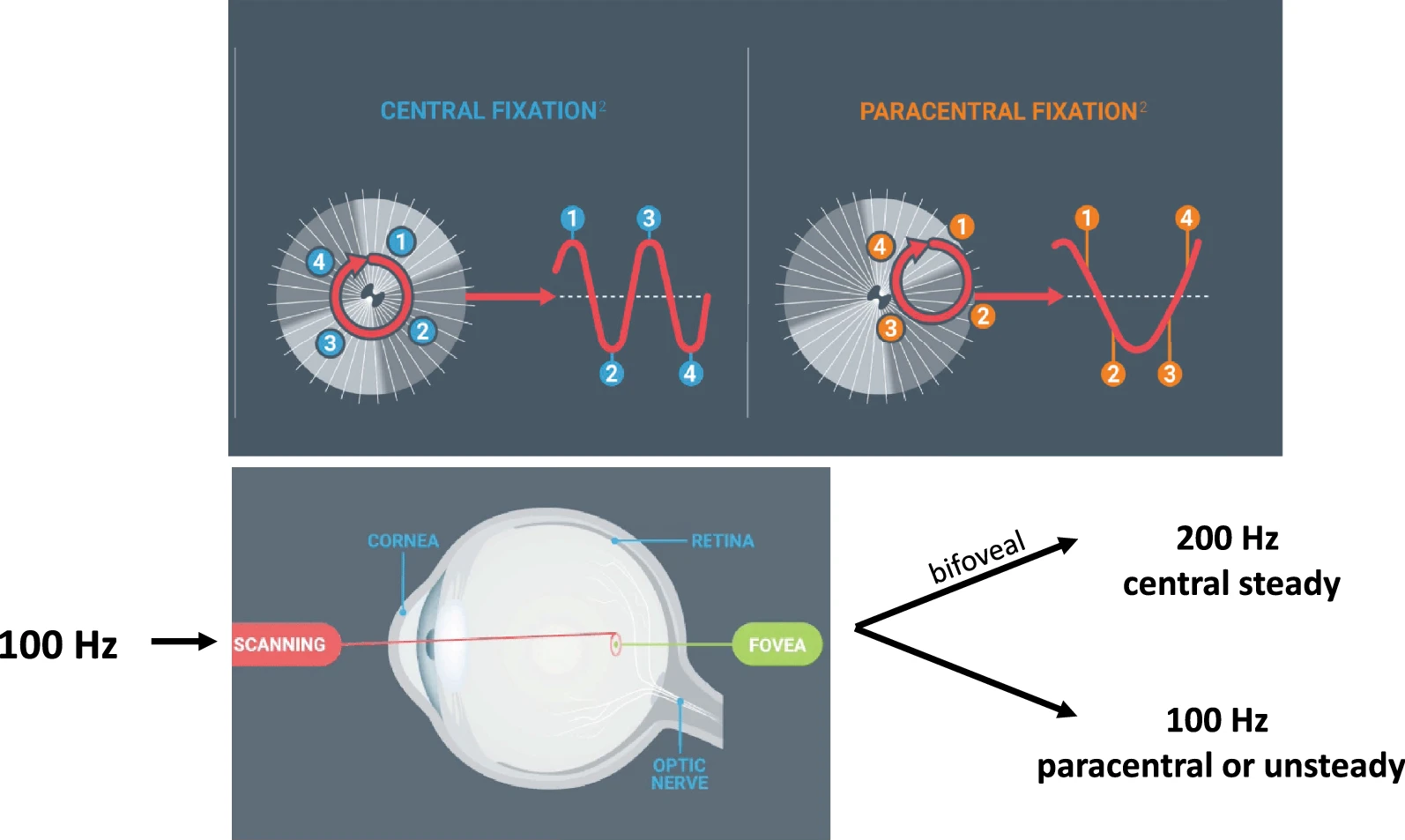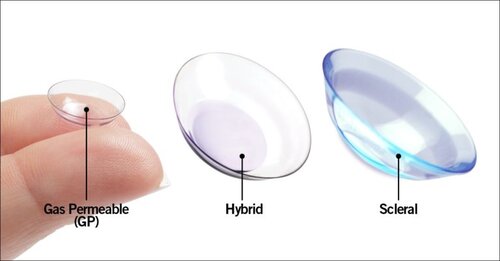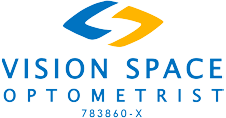Brief Overview of Common Pediatric Vision Issues and Corrective Measures
Pediatric vision issues are a significant concern as they can affect a child’s development, learning, and quality of life. Common paediatric vision problems include myopia (nearsightedness), hyperopia (farsightedness), astigmatism (distorted vision), and amblyopia (lazy eye).

Myopia is particularly prevalent and is characterized by the elongation of the eyeball, causing distant objects to appear blurred. This condition is a growing global health problem due to its increasing prevalence and the risk of visual impairment from myopia-related ocular morbidity [2].
Corrective measures for these conditions vary based on the specific issue and its severity. Interventions for myopia focus on slowing its progression, as it typically emerges in children under 10 years old and can advance quickly. These interventions include optical, pharmacological, and environmental strategies. Optical interventions, such as wearing glasses or contact lenses, are common. Pharmacological treatments involve the use of medications like atropine eye drops to slow myopia progression. Environmental interventions encourage outdoor activities, which have been associated with a reduced risk of developing myopia [2].
For conditions like astigmatism, which involves an irregular curvature of the eye leading to distorted vision, corrective glasses or contact lenses are typically prescribed. In more severe cases, especially in the context of cataracts, surgical procedures such as the implantation of intraocular lenses (IOLs) can be effective. Toric IOLs, designed to correct astigmatism, have been shown to be more effective than non-toric IOLs for postoperative astigmatism correction, although their effectiveness may vary [1].
Introduction to Rigid Gas Permeable (RGP) Lenses as a Solution for Children’s Vision Correction
Rigid Gas Permeable (RGP) lenses, made from sturdy materials that permit oxygen to reach the eye, are a healthier choice for extended wear. They are particularly beneficial for children with vision correction needs due to their durability and the clarity of vision they provide. RGP lenses are effective in correcting a range of refractive errors, including myopia, hyperopia, and astigmatism [3].

One of the advantages of RGP lenses is their potential to control the progression of myopia in children. Unlike soft lenses, RGP lenses maintain their shape on the eye, which can help to reduce the elongation of the eyeball that characterizes myopia progression. Clinical trials indicate that children wearing single vision RGP lenses experienced slower myopia progression compared to those wearing soft lenses or fully corrected with glasses. However, this does not indicate that RGPs should be prescribed primarily for myopia control [4].
In summary, RGP lenses represent a valuable solution for paediatric vision correction, particularly for myopia control. Their ability to provide clear vision, combined with the health benefits of oxygen permeability and the potential to slow myopia progression, makes them an attractive option for children with refractive errors [3].
References:
- [1] Hamel, Candyce and Sharon Bailey. “Intraocular Lenses for Cataract Surgery.” Canadian Journal of Health Technologies (2023): n. Pag. (https://www.semanticscholar.org/paper/f58e41bb2140a655065985ce89b18d8f94b7fe2e)
- [2] Lawrenson, John G et al. “Interventions for myopia control in children: a living systematic review and network meta-analysis.” The Cochrane database of systematic reviews vol. 2,2 CD014758. 16 Feb. 2023, doi:10.1002/14651858.CD014758.pub2 (https://www.ncbi.nlm.nih.gov/pmc/articles/PMC9933422/)
- [3] Akinbinu, Tope R. et al. “Myopia control in the 21st century: A review of optical methods (2000–2019).” African Vision and Eye Health 79 (2020): 9. (https://www.semanticscholar.org/paper/3f8ce125ef8d4472af11a35c5d788601971a86cf)
- [4] Walline, Jeffrey J., et al. “A Randomized Trial of the Effects of Rigid Contact Lenses on Myopia Progression.” Archives of Ophthalmology, vol. 122, no. 12, 2004, pp. 1760–1766, doi:10.1001/archopht.122.12.1760. (https://jamanetwork.com/journals/jamaophthalmology/article-abstract/416731)
Understanding RGP Lenses
Overview of RGP Lenses and Their Differences from Soft Lenses
Rigid Gas Permeable (RGP) lenses are a type of contact lens crafted from durable materials that enable oxygen to pass through the lens to the cornea. Unlike soft lenses, which are made from flexible, water-containing plastics, RGP lenses are made from silicone acrylate or fluorosilicone acrylate polymers. These materials do not contain water, which makes RGP lenses less prone to bacterial growth and provides a lower risk of eye infections [5].
RGP lenses maintain their shape on the eye, providing sharper vision correction, especially beneficial for individuals with astigmatism or irregular corneas, such as those with keratoconus[5]. They are also more durable and have a longer lifespan than soft lenses. However, RGP lenses may require a longer adaptation period for the wearer due to their rigidity [5].
Soft lenses, on the other hand, are known for their immediate comfort due to their flexible material and high water content. They conform to the eye’s surface and are generally easier for users to adapt to. Soft lenses are more suitable for individuals who prefer not to feel their lenses as much and are looking for ease of use over the correction of complex visual issues [5].
Technology Behind RGP Lenses: Material, Design, and Oxygen Permeability
Material and Design
RGP lenses are crafted from materials that are highly oxygen-permeable. The primary materials used include silicone acrylate and fluorosilicone acrylate, which are rigid yet allow significant oxygen transmission to the cornea [5]. The design of RGP lenses is typically smaller in diameter compared to soft lenses, focusing on covering the cornea rather than extending to the sclera. This design aids in maintaining the shape of the lens, providing precise vision correction and reducing lens movement on the eye [5].
Oxygen Permeability
Oxygen permeability (Dk) is a critical factor in contact lens materials, as it affects corneal health. RGP lenses generally offer superior oxygen permeability compared to traditional soft lenses. This high permeability helps prevent hypoxia-related complications, such as corneal swelling and neovascularization, which can occur with lenses that do not allow enough oxygen to pass through to the cornea [5][6]. The oxygen transmission in RGP lenses is facilitated by the intrinsic properties of the materials used, which do not require water to transmit oxygen unlike hydrogel soft lenses [5].
In summary, RGP lenses are distinct from soft lenses in terms of material rigidity, design for specific vision correction needs, and superior oxygen permeability, making them a suitable choice for long-term wear and the management of specific corneal conditions.
References:
- [5] Bae, So Hyeon and Youngsub Eom. “Physiological Changes in the Cornea When Wearing Rigid Gas Permeable Contact Lenses.” Annals of Optometry and Contact Lens (2024): n. Pag. (https://www.semanticscholar.org/paper/f838f193e3d0dbecfce2a16492b80c31013ac67f)
- [6] Compañ, Vicente et al. “Oxygen diffusion and edema with modern scleral rigid gas permeable contact lenses.” Investigative ophthalmology & visual science vol. 55,10 6421-9. 4 Sep. 2014, doi:10.1167/iovs.14-14038 (https://pubmed.ncbi.nlm.nih.gov/25190661/)
Benefits of RGP Lenses for Children
Extended Durability and Cost-Effectiveness
Rigid Gas Permeable (RGP) lenses are known for their durability due to the high-quality, rigid materials from which they are made. This inherent durability means that RGP lenses do not need to be replaced as frequently as soft contact lenses, leading to cost savings over time. The long lifespan of RGP lenses, often lasting for several years with proper care, contrasts with the shorter lifespan of soft lenses, which may need frequent replacements ranging from daily to monthly. This extended durability not only makes RGP lenses a more cost-effective option in the long run but also reduces the environmental impact associated with frequent disposal of soft lenses [11].
Improved Visual Acuity
RGP lenses are particularly effective in providing sharp vision for children with specific refractive errors, including high myopia and irregular astigmatism. The rigid material of RGP lenses maintains its shape on the eye, creating a consistent optical surface that can correct vision more accurately than the flexible material of soft lenses. This is especially beneficial for children with keratoconus or other corneal irregularities, where the precise correction of refractive errors is crucial for optimal visual development. Studies have shown significant improvement in visual acuity with RGP lenses compared to unaided vision or vision corrected with glasses or soft lenses [9][10].
Effective Astigmatism Correction
RGP lenses are superior in correcting astigmatism, particularly irregular astigmatism, due to their rigid structure that does not conform to the cornea’s irregular shape. Unlike soft toric lenses, which can rotate and shift on the eye, leading to inconsistent vision correction, RGP lenses maintain their position, providing stable and consistent correction of astigmatism. This stability is crucial for achieving the best possible vision correction in children with astigmatism, as consistent alignment of the corrective lens with the astigmatism axis is necessary for clear vision. Clinical comparisons have demonstrated that RGP lenses offer better visual acuity correction for astigmatism than toric soft lenses [8].
Health and Safety Advantages
RGP lenses offer several health and safety advantages over soft lenses, primarily due to their higher oxygen permeability and reduced risk of eye infections. The rigid material used in RGP lenses allows more oxygen to reach the cornea, which is essential for maintaining corneal health and preventing hypoxic-related complications. Additionally, the surface of RGP lenses is less prone to protein and lipid deposits compared to soft lenses, reducing the risk of microbial adherence and subsequent eye infections. Clinical trials have indicated that the new generation of hyper-oxygen transmissible RGP lenses may significantly reduce the risk of microbial infections associated with lens wear, representing a significant safety advantage for children using contact lenses [7].
References:
- [7] Cavanagh, H Dwight et al. “Effects of daily and overnight wear of hyper-oxygen transmissible rigid and silicone hydrogel lenses on bacterial binding to the corneal epithelium: 13-month clinical trials.” Eye & contact lens vol. 29,1 Suppl (2003): S14-6; discussion S26-9, S192-4. doi:10.1097/00140068-200301001-00005 (https://pubmed.ncbi.nlm.nih.gov/12772723/)
- [8] Yunard, Ardiella and Tri Rahayu. “Comparison of Rigid Gas Permeable and Toric Soft Lens for Correcting Astigmatism.” Ophthalmologica Indonesiana (2016): n. Pag. (https://www.semanticscholar.org/paper/445349538c9feb48e4db1489847b730bab1bc59e)
- [9] Kibet Yego, Walter, and Vanessa Raquel Moodley. “Visual Acuity and Refractive Error Improvement in Keratoconic Patients: A Low-Income Context Management Perspective.” Clinical optometry vol. 12 113-122. 19 Aug. 2020, doi:10.2147/OPTO.S258905 (https://www.ncbi.nlm.nih.gov/pmc/articles/PMC7443409/)
- [10] Ram, Jagat et al. “Comparison of Rigid Gas-permeable Contact Lenses with Soft Hydrogel Contact Lens in Keratoconus and their Impact on Quality of Life.” International Journal of Keratoconus and Ectatic Corneal Diseases (2019): n. Pag. (https://www.semanticscholar.org/paper/8f99fad05d7e5045d2e472f8133ffa63194b6d50)
- [11] Holden, Brien Anthony et al. “Session V: Rigid Lenses, Soft Lenses, or LASIK: Which Would You Choose?: Discussion and Summary.” Eye & Contact Lens-science and Clinical Practice (2003): n. Pag. (https://www.semanticscholar.org/paper/b5388dc1bfa7846d081a5e2d12e56cc6c2ff875b)
Addressing Concerns: Comfort and Adaptation
The Adaptation Period for Children Transitioning to RGP Lenses
Transitioning children to Rigid Gas Permeable (RGP) lenses involves an adaptation period that is crucial for successful long-term wear. RGP lenses, due to their rigid nature, can initially cause discomfort compared to soft lenses or eyeglasses. This adaptation period is a normal phase where the child’s eyes adjust to the presence of the lenses. Clinical studies, such as the Contact Lens and Myopia Progression (CLAMP) study, have shown that children can successfully adapt to RGP lenses with time. The study highlighted the importance of a run-in period to exclude those who could not adapt to wearing rigid contact lenses, indicating that adaptation is a critical step in the successful use of RGP lenses in children [12].
Tips for Parents to Help Their Children Adjust to Wearing RGP Lenses
Parents play a vital role in helping their children adjust to wearing RGP lenses. Here are several evidence-based tips derived from clinical practices and studies:
- Start with a Positive Attitude: Encourage your child by focusing on the benefits of RGP lenses, such as improved vision and convenience for sports and activities.
- Gradual Introduction: Similar to the approach suggested in the Contact Lens Spectrum, introducing RGP lenses gradually can help ease the child into comfortable wear. Starting with short periods and gradually increasing wear time can help the eyes adjust.
- Emphasize Hygiene and Care: Teaching children about proper lens care and hygiene is crucial. This includes how to clean, rinse, and store the lenses, as well as the importance of hand washing before handling the lenses.
- Use of Comfort Drops: A drop of topical anesthetic at the dispensing visit can alleviate initial discomfort and fear, making the first few experiences more positive.
- Regular Follow-ups with the Optometrist: Regular check-ups can ensure the lenses fit correctly and allow for adjustments as needed. This also provides an opportunity to address any concerns or discomfort the child may be experiencing.
- Encourage Persistence: Remind your child that it’s normal to feel aware of the lenses at first, but this sensation typically diminishes with time. Sharing success stories of other children who have successfully adapted to RGP lenses can be motivating.
- Monitor for Signs of Discomfort: If your child expresses persistent discomfort or pain, it’s important to consult with your eye care practitioner immediately. Discomfort can be a sign of improper fit or other issues that need professional attention.
By following these tips and maintaining open communication with both their child and eye care professional, parents can significantly ease the transition to RGP lenses, leading to a successful and comfortable wearing experience.
Reference:
- [12] Walline, Jeffrey J et al. “Interventions to slow progression of myopia in children.” The Cochrane database of systematic reviews vol. 1,1 CD004916. 13 Jan. 2020, doi:10.1002/14651858.CD004916.pub4 (https://www.ncbi.nlm.nih.gov/pmc/articles/PMC6984636/)
Choosing the Right Lens: Factors to Consider
Consulting with Pediatric Eye Care Specialists
When it comes to ensuring the health and proper development of a child’s vision, consulting with paediatric eye care specialists is crucial. These specialists are trained to assess, diagnose, and treat eye conditions in children, taking into account the unique needs and developmental stages of paediatric patients. The American Optometric Association (AOA) emphasizes the importance of early and regular eye examinations to detect potential vision problems that could affect a child’s ability to learn and develop normally [13][14][15][16].
Paediatric eye care specialists can provide comprehensive eye and vision examinations tailored to the child’s age and developmental level. These exams go beyond simple vision screenings, which might not detect all potential vision problems. For instance, conditions like amblyopia (lazy eye) or strabismus (crossed eyes) require early detection and treatment to prevent long-term vision impairment [13][14][16].
Furthermore, paediatric eye care specialists can offer guidance on preventing eye injuries, managing screen time to reduce the risk of myopia (nearsightedness), and ensuring that children receive the necessary interventions, such as eyeglasses or vision therapy, if needed [13][14][15][16]. They can also advise on the best practices for promoting healthy vision development, including the importance of outdoor play and activities that stimulate visual skills [13][14][16].
Key Considerations for Children’s Vision Needs
Child’s Age
The child’s age is a fundamental consideration in determining the appropriate vision care and interventions. Vision development milestones vary significantly as a child grows, and understanding these stages is essential for timely and effective eye care [13][14][16].
- Infants and Toddlers (Birth to 2 Years): Early eye examinations are recommended to identify congenital eye conditions and ensure normal vision development. Activities that stimulate eye tracking and hand-eye coordination are beneficial [13][16].
- Preschoolers (3 to 5 Years): This age group should undergo comprehensive eye examinations to detect conditions like amblyopia or strabismus, which are more effectively treated when caught early. Encouraging activities that require visual discrimination and fine motor skills is crucial [13][16].
- School-Aged Children (6 to 18 Years): Regular eye exams are vital as vision problems can impact learning and academic performance. Protective eyewear for sports and guidelines for healthy screen time are important considerations [15][16].
Activity Level
A child’s activity level influences their vision needs. Active children, especially those involved in sports, may require durable, impact-resistant eyewear to protect against injuries. For children who spend significant time on digital devices, measures to reduce eye strain and exposure to harmful blue light might be necessary [15][16].
Specific Vision Needs
Each child’s vision is unique, requiring personalized care and interventions. Children with refractive errors (e.g., myopia, hyperopia, astigmatism) need appropriate corrective lenses. Those with binocular vision problems may benefit from vision therapy. Additionally, children with special needs or developmental delays might require specialized vision care approaches [13][14][15][16].
In summary, consulting with paediatric eye care specialists and considering the child’s age, activity level, and specific vision needs are critical steps in ensuring healthy vision development. Tailored interventions and regular eye examinations can help address potential vision problems early, supporting a child’s overall development and well-being.
References:
- [13] “Preschool Vision: 2 to 5 Years of Age.” American Optometric Association. https://www.aoa.org/healthy-eyes/eye-health-for-life/preschool-vision?sso=y.
- [14] “Comprehensive Pediatric Eye and Vision Examination.” American Optometric Association, 12 Feb. 2017. https://www.aoa.org/AOA/Documents/Practice%20Management/Clinical%20Guidelines/EBO%20Guidelines/Comprehensive%20Pediatric%20Eye%20and%20Vision%20Exam.pdf.
- [15] “School-Aged Vision: 6 to 18 Years of Age.” American Optometric Association. https://www.aoa.org/healthy-eyes/eye-health-for-life/school-aged-vision?sso=y.
- [16] Turbert, David. “Vision Development: Childhood.” American Academy of Ophthalmology, 15 Aug. 2020. https://www.aao.org/eye-health/tips-prevention/children-vision-development.
Caring for RGP Lenses
Basic Tips for Cleaning RGP Lenses
Rigid Gas Permeable (RGP) lenses require regular and thorough cleaning to maintain their condition and to ensure the health of the wearer’s eyes. The cleaning process involves several steps:
- Hand Washing: Always start by washing your hands with mild soap and drying them with a lint-free towel to avoid transferring dirt or germs to the lenses or your eyes [20].
- Rub and Rinse: Use a recommended cleaning solution to rub the lenses gently with your fingers, then rinse them thoroughly to remove any debris and microbes. This step is crucial even if you’re using a “no-rub” solution, as mechanical cleaning significantly reduces the microbial load on the lens surface [17b][21].
- Soaking: After cleaning, lenses should be soaked in a recommended disinfecting solution overnight. This step is essential for disinfecting the lenses and making them safe to wear again [19b].
- Enzymatic Cleaning: For deeper cleaning, an enzymatic cleaner can be used weekly or as recommended by your eye care professional. This helps to remove protein deposits that regular cleaning might not eliminate[21].
Storing RGP Lenses
Proper storage is vital for maintaining the integrity of RGP lenses and preventing contamination:
- Dry Storage: If not worn for a long period, RGP lenses are best stored dry in a clean lens case. Solutions can become contaminated over time, making long-term storage in solution risky [22].
- Fresh Solution: Always use fresh disinfecting solution for soaking the lenses. Never “top off” old solutions in the case, as this can lead to contamination and increase the risk of eye infections [23].
- Case Care: Clean the lens case after each use, and replace it at least every three months to prevent microbial contamination. Allow the case to air dry between uses [19b][23].
Maintaining RGP Lenses for Longevity and Eye Health
To ensure the longevity of RGP lenses and maintain eye health, follow these guidelines:
- Regular Check-ups: Visit your eye care professional regularly to ensure your lenses are still fitting correctly and to check for any changes in your eye health [21].
- Avoid Water Contact: Never rinse or store RGP lenses in tap water, as this can introduce harmful microorganisms that can lead to severe eye infections like Acanthamoeba keratitis [23][24].
- Handle with Care: Be gentle when handling RGP lenses to avoid damaging them. Avoid using fingernails or sharp objects to handle the lenses [20].
- Follow Wear Schedule: Adhere to the recommended wearing schedule provided by your eye care professional. Over wearing lenses can lead to discomfort and increase the risk of eye health issues [18].
By following these guidelines based on the latest clinical human studies and scientific evidence, wearers of RGP lenses can ensure their lenses last longer and their eyes remain healthy.
References:
- [17b] “Essential Contact Lens Practice.” Johnson & Johnson Vision Care, no publication date. PDF file. (https://www.jnjvisioncare.ae/sites/default/files/public/ae/documents/42109_tvci_txtbk_chptr_11_snglpgs_hr.pdf).
- [18] Lievens, Christopher W et al. “Contact lens care tips for patients: an optometrist’s perspective.” Clinical optometry vol. 9 113-121. 11 Aug. 2017, doi:10.2147/OPTO.S139651 (https://www.ncbi.nlm.nih.gov/pmc/articles/PMC6118862/).
- [19b] “Contact Lens Care.” American Optometric Association. (https://www.aoa.org/healthy-eyes/vision-and-vision-correction/contact-lens-care).
- [20] Whelan, Corey. “Hard Contact Lenses: Pros, Cons, Safety.” Healthline, 11 Oct. 2021. (https://www.healthline.com/health/eye-health/hard-contact-lenses).
- [21] Boyd, Kierstan. “How to Take Care of Contact Lenses.” American Academy of Ophthalmology, 22 Apr. 2022. (https://www.aao.org/eye-health/glasses-contacts/contact-lens-care).
- [22] Lee, William Barry, MD. “What is the Best Way to Store an Old Pair of Rigid Gas Permeable Lenses?” American Academy of Ophthalmology, 1 Sept. 2017. (https://www.aao.org/eye-health/ask-ophthalmologist-q/what-is-best-way-to-store-old-pair-of-rigid-gas-pe).
- [23] Musgrave, Christopher Stephen Andrew, and Fengzhou Fang. “Contact Lens Materials: A Materials Science Perspective.” Materials (Basel, Switzerland) vol. 12,2 261. 14 Jan. 2019, doi:10.3390/ma12020261 (https://www.ncbi.nlm.nih.gov/pmc/articles/PMC6356913/).
- [24] Cope, Jennifer R et al. “Acanthamoeba Keratitis among Rigid Gas Permeable Contact Lens Wearers in the United States, 2005 through 2011.” Ophthalmology vol. 123,7 (2016): 1435-41. doi:10.1016/j.ophtha.2016.03.039 (https://www.ncbi.nlm.nih.gov/pmc/articles/PMC4921294/).
Conclusion
Potential Benefits of RGP Lenses for Children’s Vision
Rigid Gas Permeable (RGP) lenses have been studied for their potential to control the progression of myopia in children. A notable study conducted over three years focused on Singaporean children, a group known for rapidly progressive myopia compared to their Western counterparts. This study aimed to determine if RGP lenses could effectively control myopia progression through mechanisms such as corneal flattening or by influencing the axial length of the eye. The results indicated that children wearing RGP lenses showed a suppression in the progression of myopia compared to those wearing spectacles. In some cases, there was even an arrest in the progression of myopia [1], but they do not indicate that RGPs should be prescribed primarily for myopia control [5].
Encouragement for Parental Involvement
Given the findings from clinical studies, it is advisable for parents to consider RGP lenses as a part of their child’s eye care regimen, especially for managing myopia. The study highlighted the importance of parental support and encouragement in the successful adoption of RGP lenses among children. Parents are encouraged to discuss this option with their child’s eye care provider, who can offer personalized advice based on the child’s specific vision needs and lifestyle. Such personalized advice is crucial because it considers the child’s daily activities, comfort with wearing lenses, and the specific degree of myopia to be managed [25].
References:
- [25] Khoo, C Y et al. “A 3-year study on the effect of RGP contact lenses on myopic children.” Singapore medical journal vol. 40,4 (1999): 230-7. (https://pubmed.ncbi.nlm.nih.gov/10487074/)
Consultation with a Pediatric Optometrist
Given the potential benefits of Rigid Gas Permeable (RGP) lenses in controlling myopia progression in children, it is highly recommended for parents to schedule a consultation with a paediatric optometrist. This professional can assess whether RGP lenses are suitable for their child’s specific vision correction needs. During the consultation, the optometrist will evaluate the child’s overall eye health, the degree of myopia, and any other factors that might influence the effectiveness and suitability of RGP lenses. This step is crucial for ensuring that the child receives the most appropriate and effective form of vision correction, tailored to their individual needs.
This Article is Medically Reviewed by Oh Poh Ling

Poh Ling graduated as an optometrist from SEGi University. She believes that a person will be able to fully enjoy life when they have comfortable vision and healthy eyes. Poh Ling is involved in numerous vision screenings for the underprivileged school children and also for the public in an aim to promote awareness about the importance of regular eye examination. She enjoys travelling and playing tennis.
Her Specialties includes:
1. Specialty contact lens fitting: Keratoconus
2. Orthokeratology
Favourite Quote: “While there’s life, there is hope.” – Stephen Hawking

